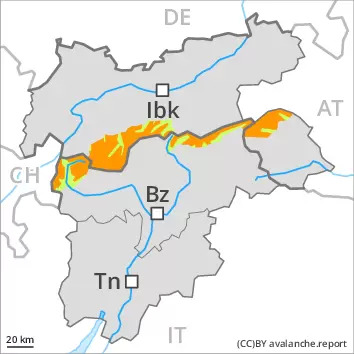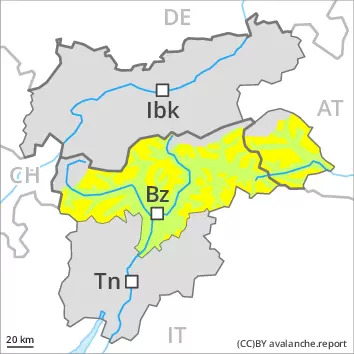
Danger level
 | 2200m |
|  |
|  | ||||
|  |
|  |

Weak layers in the old snowpack necessitate caution. Wind slabs are to be evaluated with care and prudence.
The wind slabs of the last few days are in some cases still prone to triggering. They can be released by a single winter sport participant. The avalanche prone locations are to be found on steep shady slopes above approximately 2200 m. Adjacent to ridgelines and in gullies and bowls the avalanche prone locations are more prevalent.
Avalanches can in some places be released in deeper layers, even by a single winter sport participant. This applies on steep west, north and east facing slopes between approximately 2200 and 2600 m. Avalanches can in some cases reach dangerously large size.
On extremely steep sunny slopes individual small loose snow avalanches are possible as a consequence of warming during the day and solar radiation.
Snowpack
dp.6: cold, loose snow and wind
As a consequence of a moderate to strong southwesterly wind, further wind slabs will form on Thursday. In some cases the various wind slabs have bonded poorly with each other and the old snowpack. They are mostly easy to recognise but prone to triggering.
In its middle, the snowpack is faceted and weak, especially on shady slopes between approximately 2200 and 2600 m.
Tendency
As a consequence of falling temperatures and the light to moderate westerly wind, the snow drift accumulations will stabilise during the next few days.



